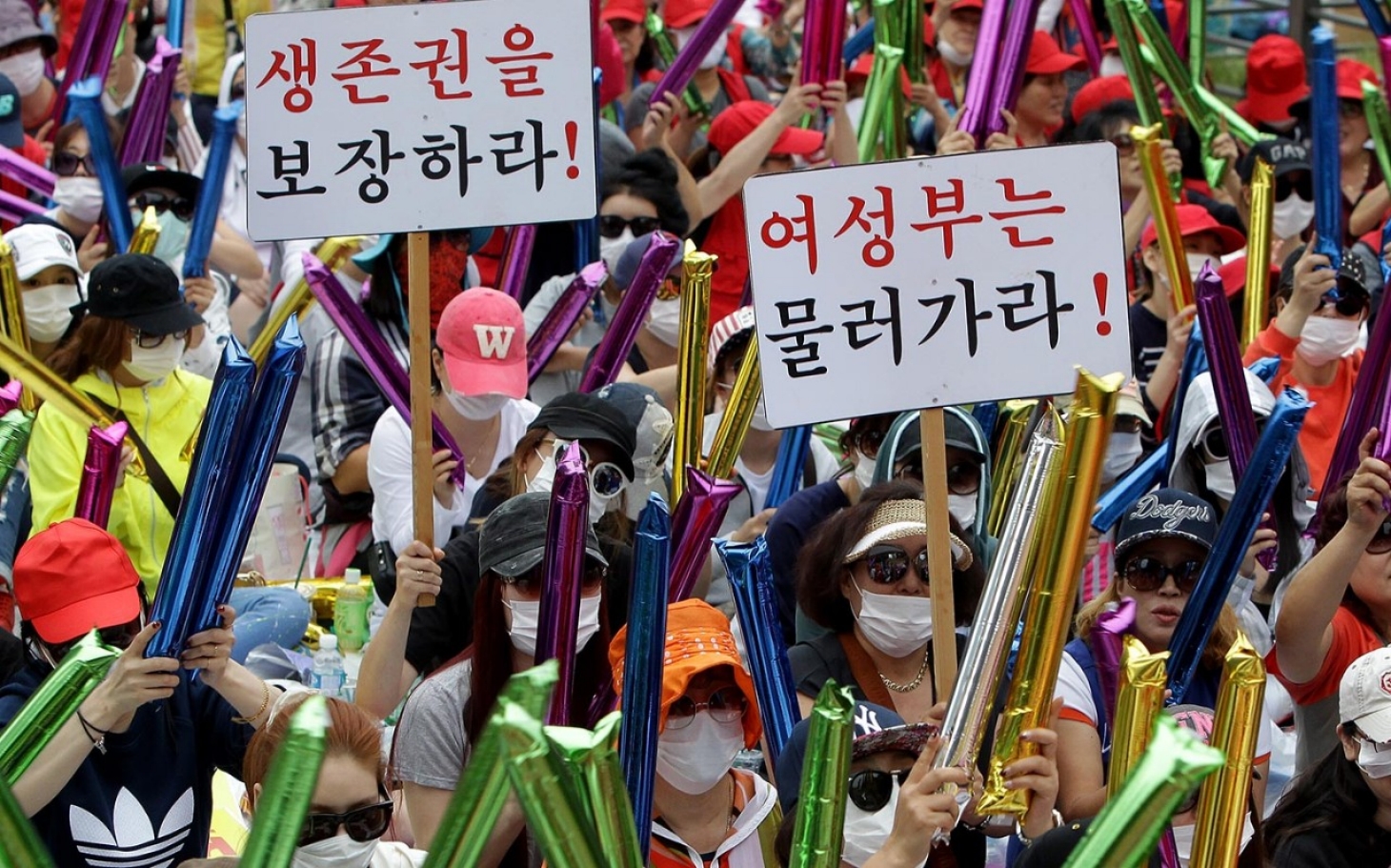New Zealand Justice Committee rejects Swedish Model
Yes and no, and no again!
In recent weeks, members of the Northern Ireland Assembly as well as the House of Commons and the Senate of Canada have voted in favour of laws to criminalise the purchase of sexual services, a measure commonly referred to as the Swedish Model. In July, however, the Select Committee of the French Senate rejected such a move, as did a majority of members of the House of Commons of the United Kingdom last week. The latest decision against the Swedish Model was handed down on November 7, 2014, by the Justice and Electoral Committee of the New Zealand Parliament (Pāremata Aotearoa).
Petition by Freedom from Sexual Exploitation
In May 2013, Elizabeth Subritzky had submitted a petition on behalf of Freedom from Sexual Exploitation that the House of Representatives legislate for a national plan of action to combat street prostitution, including a law to make the purchase of sexual services illegal. At the time, Subritzky claimed that the Prostitution Reform Act of 2003, which decriminalised sex work, was to blame for women selling sex. According to Subritzky, the law had not only encouraged more men to buy sex, but also “transformed prostitution into an acceptable, even attractive job for young, poor women in New Zealand”. (Source: Stuff New Zealand)
The Prostitution Reform Act 2003
The Prostitution Reform Act 2003 decriminalises prostitution while not endorsing or morally sanctioning it or its use. The Act, administered by the Ministry of Justice, creates a framework that
- safeguards the human rights of sex workers and protects them from exploitation
- promotes the welfare, occupational health and safety of sex workers
- is conducive to public health
- prohibits people under 18 years of age from working in prostitution.
The Act provides protections for all sex workers, whether they work indoors or on the streets, by making prostitution subject to the same laws and controls that regulate other businesses. No person in New Zealand on a visa may provide commercial sexual services, or act as an operator of or invest in a New Zealand prostitution business. (Source: Report of the Justice and Electoral Committee)
Report of the Justice and Electoral Committee
Based on the 2008 Report of the Prostitution Law Review Committee (PLRC), established under the Prostitution Reform Act, the Justice and Electoral Committee stated that a perceived increase in street prostitution “may be due to an increase in visibility in some areas” which “may not necessarily represent greater numbers overall.” The committee also referred to a 2010 report from the New Zealand Prostitutes Collective which found that “the number of sex workers is relatively stable, and in some parts of the country, such as Wellington, is decreasing as sex workers have the means to shift indoors and to work from home or elsewhere”.1
With regards to the impact of street-based sex workers on the communities they work in, the committee found that while a small number of communities “have raised concerns about vehicle noise, disorderly behaviour, and the disposal of rubbish”, there are already laws in place to address them. A review of the issues associated with street-based sex work undertaken by the Ministry of Justice in 2009 recommended “a comprehensive local approach to improve community safety and minimise harm” and suggested that “banning and moving on street-based sex workers might drive activity further underground, impairing the health and safety of workers”.
Whereas Subritzky’s petition expressed concern that street-based sex workers were “particularly vulnerable to violence, rape, drug and alcohol abuse, poverty, and social marginalisation”, the committee stated that the aforementioned 2008 PLRC report had concluded that “on the whole the vast majority of those involved in the sex industry are better off than they were before the Prostitution Reform Act, and [that] the relationship between sex workers and the police has improved.” Acknowledging the vulnerability of street-based sex workers, the committee recommended to encourage them to move to indoor workplaces and support them “to work as safely as possible while causing minimal disruption to local residents”.
In response to the request in Subritzky’s petition to make the purchase of sexual services illegal, the committee stated: “The purpose of the Prostitution Reform Act is to give sex workers the same protections as other workers, recognising that sex workers are not necessarily victims. The 2008 PLRC report noted that Swedish sex workers have criticised the Swedish model, saying the need to protect their clients from the risk of prosecution disadvantages them and exposes them to risk. The committee considered that all forms of criminalisation increase workers’ vulnerability, producing negative health and safety outcomes.”
With regards to the suggestion in Subritzky’s petition that prosecuting brothel managers would enable authorities to control human trafficking, the committee pointed to existing trafficking legislation, which also punishes “a range of conduct associated with trafficking, including rape, engaging underage prostitutes, coercing prostitutes, and exploitation of labourers”. It added that New Zealand was meeting its “international obligations to prevent and combat people trafficking under the United Nations Convention against Transnational Organised Crime” and had amended the law “to remove the cross-border requirement, ensuring domestic and transnational human trafficking can be prosecuted and punished”.
Whereas the Subritzky’s petition expressed concern “about the number of under-age street-based sex workers”, the committee referred to reports from the New Zealand Prostitutes Collective, which indicated that “there are very few under-age workers in Christchurch and Wellington, and few in Auckland”, and that “the existence of the Act has made brothel operators more aware of the law on under-age workers”. In addition, the 2008 PLRC report had concluded that there had been “no increase in the number of under-age prostitutes since the Act came into force”.
On the subject of under age sex workers
Under 11.4 Media Influence on Public Perception, the 2008 PLRC report cited findings from Nicolas Pascoe (2007) that “the most common negative assumptions were that decriminalisation will increase the numbers of under age people involved in prostitution, and that there is or will be more crime associated with sex work” due to the Prostitution Reform Act. “The analysis concluded the way in which an issue is reported (whether negative or positive assumptions about it are made and reinforced), may prompt attention from other sectors of the media and from politicians whose involvement in turn adds weight to the perception that the matter is of grave concern. Thus, the perceived scale of a ‘problem’ in a community can be directly linked to the amount, and tone, of newspaper coverage it receives. The Committee considers that much of the reporting on matters such as the numbers of sex workers and under age involvement in prostitution has been exaggerated.” (p. 163)
Rejecting Subritzky’s petition, the Justice and Electoral Committee concluded: “We appreciate the petitioner’s concerns about street prostitution. However, we are aware that the eradication of street-based prostitution has not proved to be achievable in any jurisdiction, and simply banning it may have negative consequences for the health and safety of sex workers. We support the Prostitution Law Review Committee’s conclusion that local approaches are likely to be most effective in dealing with street prostitution.”
Reaction from Dr Calum Bennachie
“It may seem like a quiet, minor victory, but it is very important. After failing in 2003 to have it added to the Prostitution Reform Bill as it made its way through parliament and after their failed attempt at getting a Citizens Initiated Referendum to overturn the Prostitution Reform Act, abolitionists again attempted to overturn the rights of sex workers. The Select Committee considering their petition has thrown it out, ruling on the side of reason and evidence, rather than on the basis of ideology.
When other groups are finally given rights by society, they rarely have to keep returning to parliament to protect those rights. Yet, sex workers, who have been given their rights by Parliament in 2003 when sex work was decriminalised, continually have to defend themselves in parliament, fight the same battles, and time after time have to refute the same tired arguments based on invented figures. In this petition, there were claims that most people entering sex work do so under 18 years of age. This claim is blatantly untrue, and in another part of the petition, Freedom From Sexual Exploitation actually claims that 18.3% of sex workers start under 18 years of age. No matter how often they repeat their incorrect assertion, 18.3% do not represent the majority of sex workers, and they are still less than the 35.6% of sex workers who started work between 18 and 21, the age group in which most sex workers start. These abolitionists need to realise that the falsehoods, fictions, myths, and lies that they tell will not win, and will be exposed.”
Dr Calum Bennachie is the Coordinator of PUMP (Pride and Unity among Male Prostitutes), the male sex worker project of the New Zealand Prostitutes Collectives.
Footnote + Further Reading
[1] This report is based on Abel, Fitzgerald, & Brunton’s (2009) paper “The impact of decriminalisation on the number of sex workers in New Zealand”. [J Soc Pol 38(3) 515-31]
Response by the Ministry of Justice to Petition 2011/60
Evidence submitted by the New Zealand Prostitutes Collective Part 1 Part 2 Part 3
New Zealand Prostitutes Collective “Decriminalisation of Sex Work in New Zealand” (incl. video)
“Police help short-changed sex worker”, NZ Herald, Jul 13, 2014
“Escort wins landmark case”, NZ Herald, Mar 1, 2014
Una versione italiana di questo articolo è stata pubblicata su abbattoimuri.
An Italian version of this article was published at abbattoimuri.
I would like to thank Dr Calum Bennachie for allowing me to include his comments in this article. (Photo © New Zealand Prostitutes Collective)








